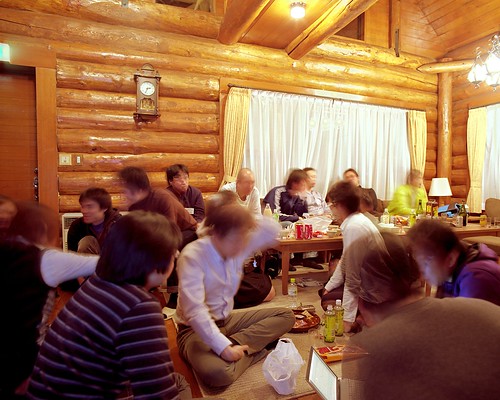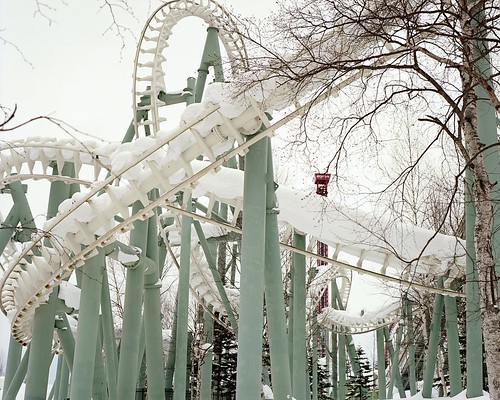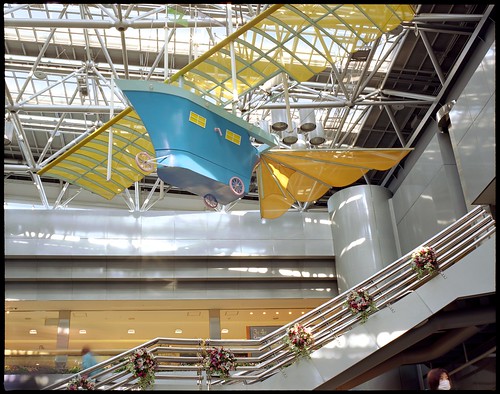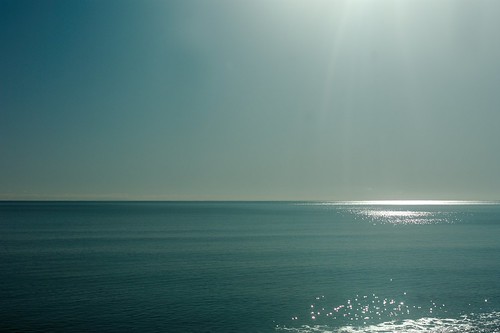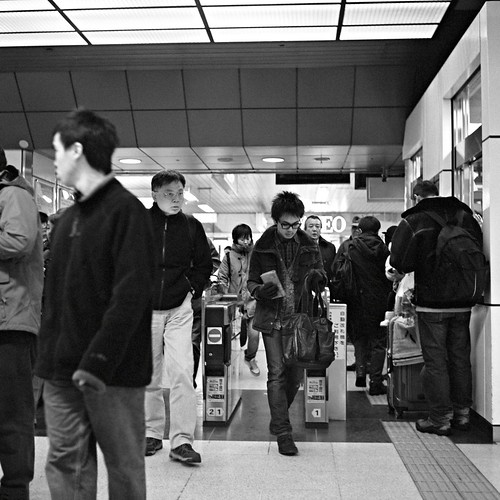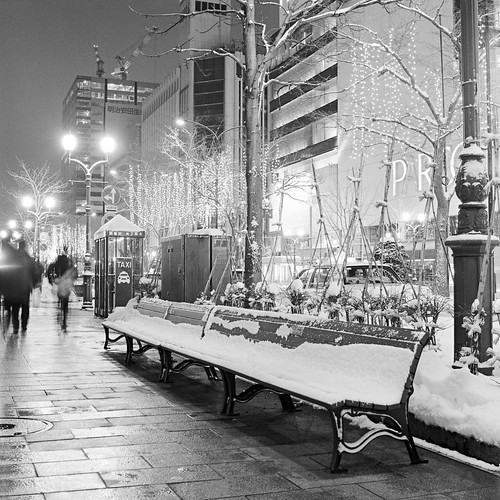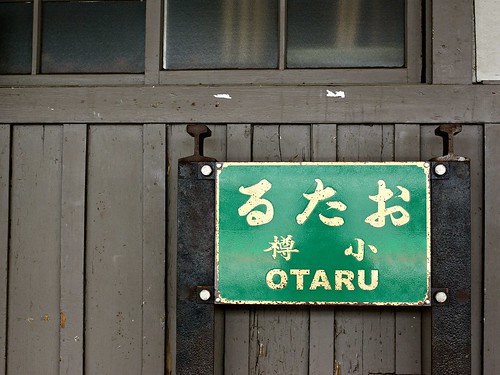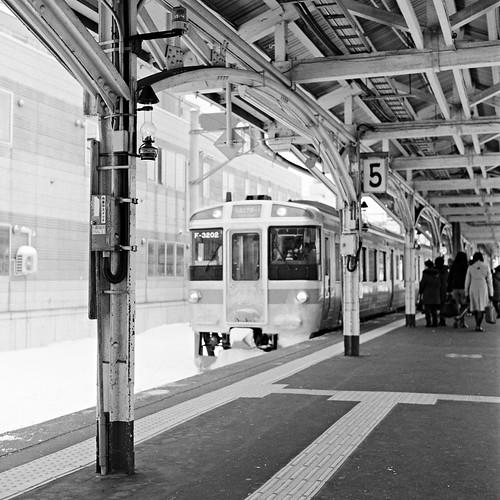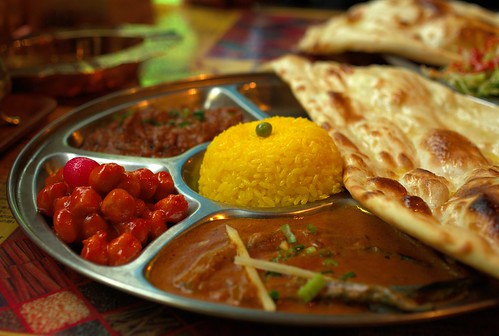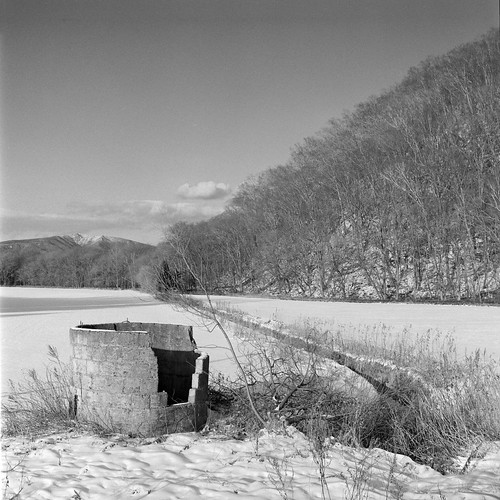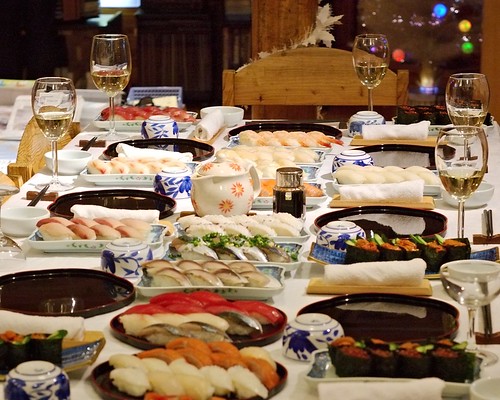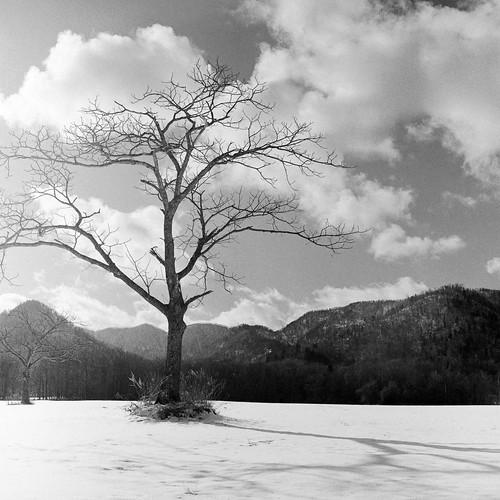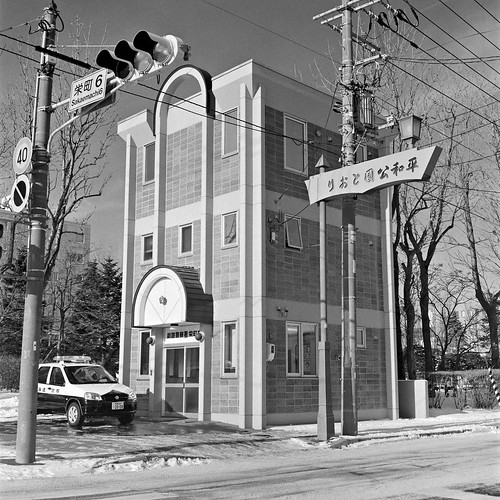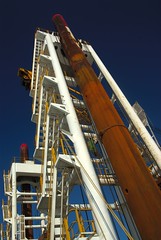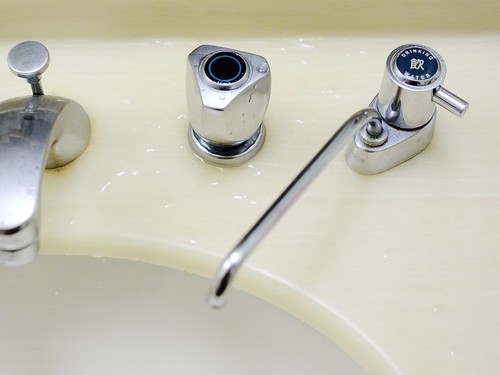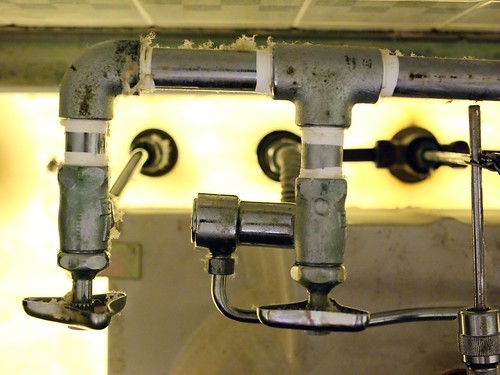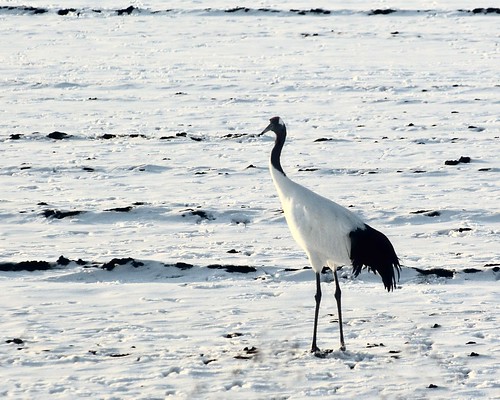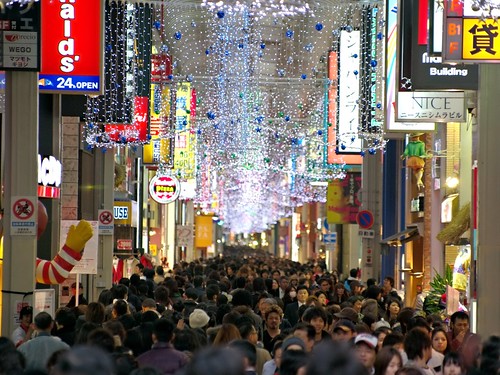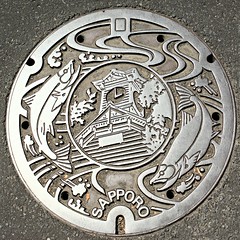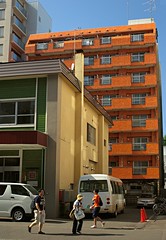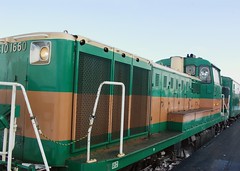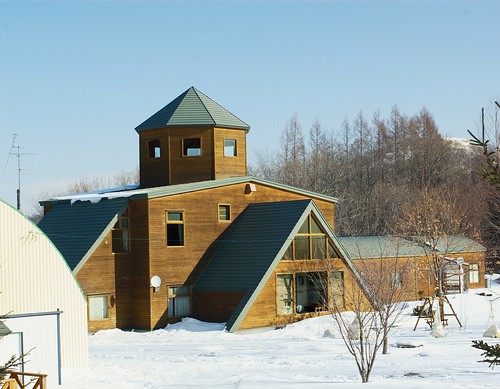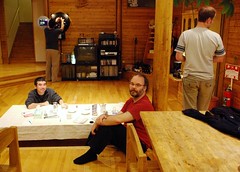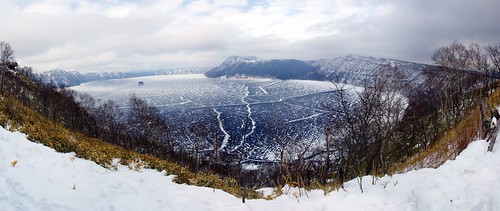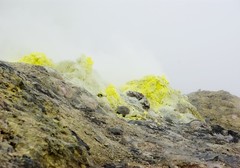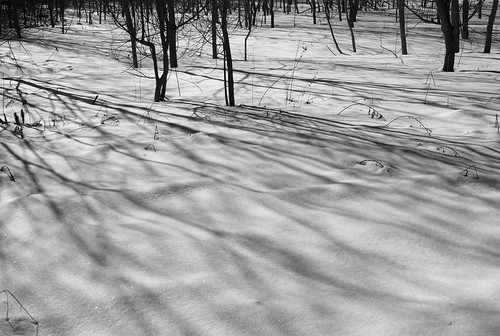Rusutsu resort hotel. The green-clothed skiers are a high-school tour group, enrolled in a snowboard class. There were lots of school and university student groups staying at the hotel. Unlike working people, students can take time off mid-week for skiing, and they're price-sensitive travellers so cheaper weekday skiing probably appeals to them for that reason too, I guess.
It may sound a little strange to schedule a workshop at a resort hotel, but it's not a bad idea at all. They have a lot of experience handling large travel groups and have very good group discounts; they have much more and cheaper space than cramped city hotels so there's plenty of room for presentations, poster sessions and demonstrations; and they're well provided with restaurants, pubs, shops and the like so people don't need to venture away - and split up - for food or drinks. Most of their business is on weekends, so hosting conferences and tour groups is a good way to fill up rooms during the week.
Rusutsu is a full-service resort. There's a dozen restaurants, cafés, various shops (both souvenirs and actual useful stuff like ski-wear), convenience stores, a bathhouse and swimming pool, conference rooms, playground, equipment rental and ski schools and so on. It's actually two mountains and two hotels, with a cable car and a monorail connecting them. I didn't check the slope maps but the system looks to be fairly extensive and the slopes seemed very well prepared from what I saw.
The cabin main room, at 2:30 in the morning, and some of the students were having a party. Of course, it being graduate students, the talk was mostly about the day's presentations and each other's research.
Our accommodation (I stayed at a log cabin with a dozen other people rather than a hotel room) was breakfast and dinner included; for dinner you got a meal ticket you could use for a dinner course at any restaurant. We had washoku the first night and chinese the second, and both courses were extensive and enjoyable. We only had one hour scheduled for dinner, however, which was too short for these slow-paced meals - we had to skip dessert the first night so we didn't miss the speaker.
There was some time set aside for skiing, but I passed this time. It's still business travel, ski slopes or not, and I had plenty of work to focus on, especially as it was my first time at this workshop. Also, I haven't actually stood on a pair of skis for over twenty years; I'd really hate to miss half the workshop on account of having my leg set and put in a cast. If I return next year, however, I'd love to take a half-day snowboarding course. Never done that, and it looks like fun.
Rusutsu is a summer resort as well, with golf courses, and a large amusement park. The park is completely snowed over in winter but to me that just makes it more interesting. I couldn't get far into the park itself due to the snow; next time I'll rent snow shoes.
Instead, I took some time for a walk and a few pictures. I couldn't get very far with all the snow, but there's still a fair amount of interesting scenery near the hotel. I only brought the Pentax 67 with me, which forces you to slow down and think things through before pressing the shutter. You only have ten images on a roll. The film was Ektar 100, a very fine-detail film with good colour, but as it's fairly slow you're pretty much forced to rely on a tripod for everything but daytime outdoor shots.
The amusement park is pretty large. They have the shrewd idea of buying up the better attractions of closed amusement parks rather than having original - expensive - designs. If you like rides, this is probably a very good place to come in summer.
I love this kind of still winter dusk, when the light is fading and colors are muted. There's no wind and not a sound to stir the moment.
Main hall, New Chitose airport south of Sapporo. This kind of public decoration I like. It's thematically right for the place, and I enjoy the whimsy of taking a child-like design, blow it up to full size and display as if it really could work. It hangs opposite a Da Vinci flying machine-style design; an interesting contrast in imagination, though of course neither would ultimately be able to fly in reality.


